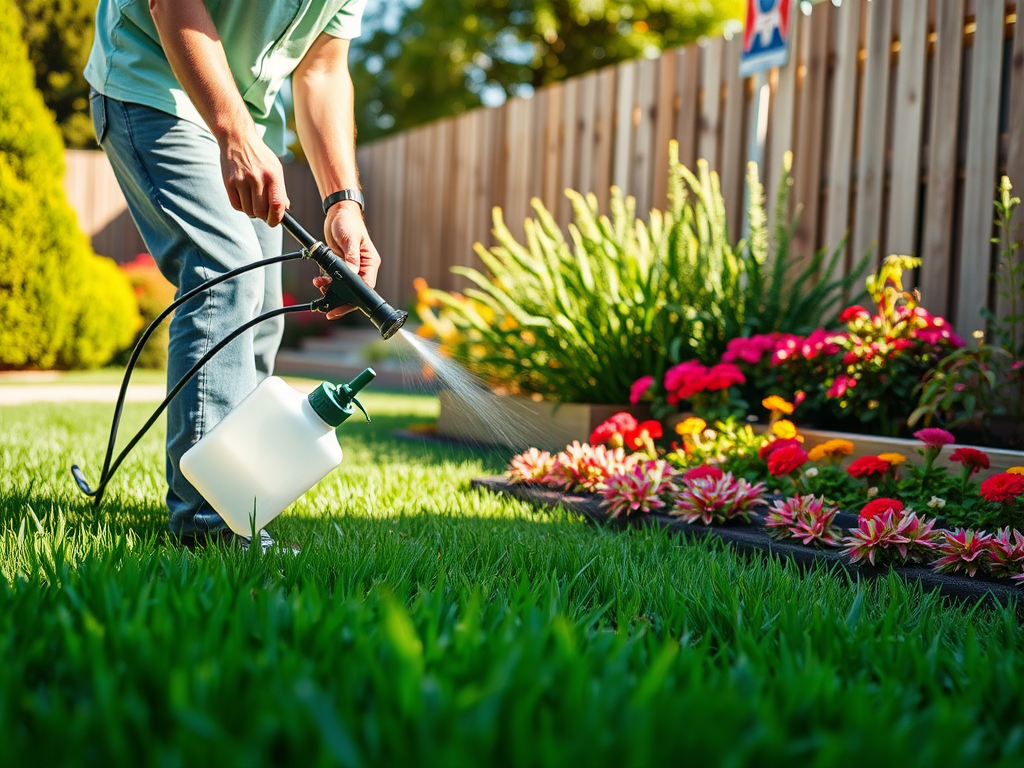When it comes to achieving a lush and beautiful lawn, maintaining weed control is critical. Weeds not only mar the visual appeal of your yard but also compete with desirable grass for nutrients, water, and sunlight. Luckily, modern lawn care has given rise to an array of weed spray options that deliver quick results. Choosing the right weed spray can save you time and effort, helping you reclaim your green spaces in a short period. In this guide, we will explore the best weed sprays on the market, their unique features, and how to apply them effectively. By understanding your options, you will be better equipped to make an informed choice for your lawn treatment needs.
To begin with, it is essential to understand the different types of weed sprays available. There are primarily two categories: pre-emergent and post-emergent herbicides. Pre-emergent weed sprays work to prevent weed seeds from germinating, creating a barrier in the soil. Conversely, post-emergent sprays actively target existing weeds, killing them off and stopping them from spreading. Each type serves its purpose based on the timing and nature of your lawn care efforts, making it essential to choose wisely.
Understanding Different Types of Weed Sprays

In selecting a weed spray, one must consider the active ingredients used within the formulation. Common components include glyphosate and dicamba, each with distinct effects on various types of weeds. Be aware that chemical herbicides can pose risks to the environment and human health. As a result, many homeowners are turning to natural alternatives, leveraging ingredients that are less harmful yet effective. This flexibility allows you to devise a lawn care strategy aligned with your environmental values and needs.
- Glyphosate: A broad-spectrum systemic herbicide, often used in post-emergent sprays.
- Dicamba: Effective against many broadleaf weeds; can be harmful to sensitive plants.
- Vinegar: A natural herbicide option, good for small areas and quick spot treatments.
Top Weed Spray Options for Your Lawn

Now that we have covered the basics, let’s delve into some of the best weed spray options currently available on the market. These products not only serve their intended purpose effectively but also cater to a range of preferences, whether you lean more towards the chemical or natural side of herbicides. After careful research and customer feedback analysis, we compiled a list of standout options that yield remarkable results.
| Brand | Type | Application Method | Effectiveness |
|---|---|---|---|
| Roundup | Post-Emergent | Spray | Fast-acting (within hours) |
| Preen | Pre-Emergent | Granular | Effective for up to 3 months |
| Green Gobbler | Natural | Spray | Good for small spots |
Let’s take a closer look at a few of these standout brands to help you decide which one might be best suited for your lawn care routine.
- Roundup: Known for its effectiveness against tough weeds like dandelions and crabgrass, Roundup delivers fast results with its convenient spray application. Users report visible results within hours, making it ideal for last-minute clean-up before events.
- Preen: As a pre-emergent option, Preen excels in preventing weeds before they sprout. Its granular formulation is easy to spread and lasts for up to three months, ensuring long-term protection. However, it requires precise timing for optimal results.
- Green Gobbler: For those seeking a more eco-friendly solution, Green Gobbler leverages natural ingredients. Although it may require repeated applications for maximum efficiency, it poses fewer risks to the environment and is safe for pets.
How to Apply Weed Spray Effectively
Applying weed spray effectively can significantly enhance its potency and reduce wasted product. Begin by checking the weather forecast; dry, windless days are ideal for application to prevent drift and maximize absorption. Ensure your lawn is well-watered, as applications typically work better on moist soil. Always follow the instructions on the label regarding dosage and application technique. Lastly, consider using a sprayer for even application, avoiding saturating any particular spots.
While using weed sprays, it is crucial to adhere to safety measures. Some options may be harmful if handled improperly. Always wear gloves and protective eyewear during application to avoid skin contact and protect your eyes. Ensure that pets and children are kept outside the treatment area until it is safe for them to return. Read the product label carefully for specific safety instructions and follow them rigorously.
Conclusion
In summary, choosing the right weed spray is vital for maintaining a vibrant and healthy lawn. Understanding the differences between pre-emergent and post-emergent sprays, along with their active ingredients, empowers you to make an informed decision. With the range of options available, from chemical to natural herbicides, you can select a product that aligns with your lawn care philosophy and meets your specific needs. Experimenting with the recommended options discussed can help maximize your lawn’s health and visual appeal.
Frequently Asked Questions
- What is the difference between pre-emergent and post-emergent weed sprays? Pre-emergent sprays prevent weed seeds from germinating, while post-emergent sprays target existing weeds.
- Can I use weed spray on all types of grass? Some weed sprays can damage certain grass types; always check product labels for compatibility.
- How often should I apply weed spray to my lawn? This depends on the type of weed spray used; most recommend reapplication every few weeks as needed.
- Are natural weed sprays as effective as chemical ones? Natural weed sprays can be effective, but they may require more frequent applications or may take longer to show results.
- What is the best time of year to apply weed spray? The best time depends on the type of weeds; generally, early spring is ideal for pre-emergent and summer for post-emergent treatments.



